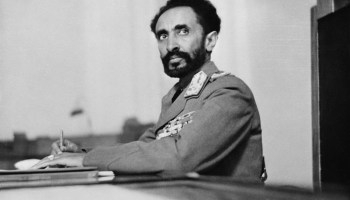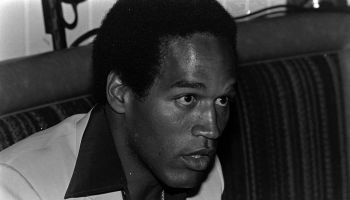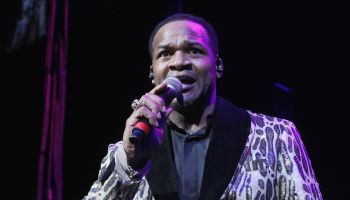
Haile Selassie became Ethiopia’s final emperor on this day in 1930, ruling the country for over four decades before he was exiled from power. He is remembered not just as the head of an African nation but as a deity in the Rastafarian religion. November 2 is seen among Rastafarian practitioners as a holy day.
Selassie was born Tafari Makonnen on July 23, 1892 into a family of nobles. He was groomed at an early age for positions of power. Emperor Menelik II was taken with the younger man’s intellectual prowess and under the emperor’s tutelage, Selassie was named governor of the cities of Harer and Sidamo.
In 1913, the emperor died and the grandson, Lij Iyasu assumed control of the throne. He was overthrown by Selassie’s army in 1916. Menelik II’s daughter, Zewditu, the heir apparent, was crowned in 1917. She rewarded Selassie’s and loyalty by naming him regent when she took the throne.
While the empress favored her country’s conservative ways, Selassie brought Ethiopia to the world stage, getting it admitted to the League of Nations in 1923. He then traveled across Europe, the first Ethiopian ruler to do so. Selassie was later named Negus, or King, of the city of Shewa in 1928.
Nas pays homage to Emperor Selassie for Halloween.
When the Empress died in 1930, Selassie was crowned emperor. According to Ethiopian traditions, monarchs typically traced their bloodline to that of Menelik I, who is thought to be the child of King Solomon and the Queen of Sheba. It has been reported the Selassie was able to trace his lineage to the House of Solomon, also known as the Solomonic Dynasty.
Early in Selassie’s rule, he moved to modernize Ethiopia, inspired by the progressiveness he learned from French missionaries as a boy. He faced resistance and in 1935, Italy invaded Ethiopia. Selassie fought valiantly but was forced into exile in 1936. However, the League of Nations helped him return and Britain lent military assistance. In 1941, Selassie recaptured the country and was renamed emperor.
It was then that Jamaicans began to revere the leader as the living messiah that would bring Black people around the world back to their rightful place in Africa. Reggae singer Bob Marley, who many associate with Rastafarianism, embraced the religion after marrying Rita Marley in 1964.
In the 1930’s, The Rastafarian movement grew in Jamaica due to Pan-Africanist leader Marcus Garvey. While Garvey, a Jamaican national, was never a follower, he is often viewed as a prophet as his Black self-empowerment ideology formed the roots of the religion. Garvey famously said in 1920, “Look to Africa, when a black king shall be crowned, for the day of deliverance is at hand.”
This is thought to have signaled the arrival of Selassie as emperor.
Selassie’s coronation is celebrated widely in the country of Jamaica. On April 21, 1966, when Selassie visited the island nation he was met by an adoring crowd of Rastafarians hoping to get close to their revered leader. While reports suggest that Selassie did not want to be viewed as a deity, he publicly embraced the role as it brought a message of goodwill to the nation.
Selassie was overthrown in 1974 by Marxist dictator Mengistu Haile Mariam. Selassie died the following year in exile. Some reports suggest that Selassie was left to die after having an operation. Others stated that he was assassinated, and many Rastas questioned the validity of his death. In 2000, Selassie was granted an Imperial funeral, although the government would not officially name it so.
Like BlackAmericaWeb.com on Facebook. Follow us on Twitter.
Little Known Black History Fact: Haile Selassie was originally published on blackamericaweb.com















